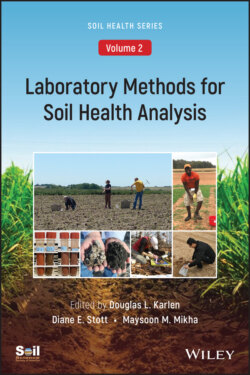Читать книгу Laboratory Methods for Soil Health Analysis, Volume 2 - Группа авторов - Страница 48
Physical Effects
ОглавлениеThe physical benefits of SOC relate to the formation and stabilization of soil aggregates. Several studies have reported high correlation between soil aggregation and SOC (Wilson et al., 2009; McVay et al., 2006; Six et al., 2002). Degradation of organic materials by soil organisms leads to the formation of humified materials associated primarily with mucilage that surrounds and binds to clay particles, thus developing and binding the particles into microaggregates (Balesdent et al., 2000). The decomposition of protected SOC can become slow due to the clay barrier, thus promoting soil carbon sequestration. Soil health benefits of greater soil aggregation include less crusting, compaction, and bulk density (Diaz‐Zorita and Grosso, 2000); enhanced soil structure for greater water infiltration and water holding capacity (Hudson, 1994; Emerson, 1995; Gupta and Larson, 1979, Yang et al., 2014); decreased soil erosion (Schertz et al., 1994; Benito and Diaz‐Fierros, 1992); and improved aeration for root growth and microbial activity. As tillage intensity increases, soil microbial activity increases right after tillage and microaggregates are dispersed, thus releasing SOM from protection (Puget et al., 1995, 2000).
